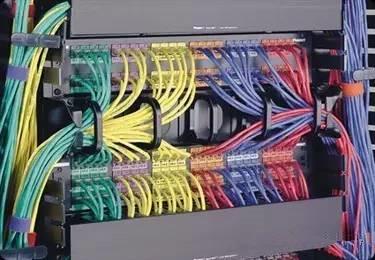- Related articles
- What is IEEE 802.3?
- Optical Transceivers for Cisco SF112-24-UK Switch
- All Cisco ONS-SC+-10G-LR's information (Overview, List price, Specs, Datasheet PDF, Compat
- All Cisco ONS-SE-2G-S1's information (List price, Specs, Datasheet PDF, Compatibility matr
- Optical Transceivers for Cisco SG500XG-8F8T-K9-G5 Switch
- Optical Transceivers for Cisco SLM248GT-UK Switch
- Optical Transceivers for Cisco SG350XG-2F10-K9-UK Switch
- Why Do We Need Optical Fiber to Get to the “Cloud”?
- Optical Transceivers for Cisco WS-C2960G-48TC-L Switch
- What is 1Gb Network Card?

We all know that the fiber has advantages of transmission bandwidth, communication capacity, low loss, free from electromagnetic interference, fine line and light weight and disadvantages of a more brittle texture and easily being broken. Little attention, it will be broken in the cable sheath. So in the process of wiring, we must master the wiring skills to minimize the attenuation of the signal.

As for the problem of the fiber signal attenuation, it is divided into internal attenuation and external attenuation. The internal attenuation is determined by the original material of fiber, while the external attenuation is closely related to the construction process. So in reducing the internal attenuation, we have to learn to choose the right fiber. Cozlink, for example, can provide high-quality fiber, and reduce the signal attenuation to a minimum. In addition, we should also pay attention to choosing different fibers for different environments. The following lists three selected fibers in the commonly used environment.
1. If transmission distance is within 2km, multi-mode fiber can be chosen. The distance more than 2km available determines relay or single-mode fiber.
2. Building fiber used in the selection should be paid attention to its characteristics of flame retardant, toxic, and smoke. Generally, in the pipeline or forced ventilation, you can choose the type of flame retardant with smoke; if it is exposed to the environment, you should use flame retardant, non-toxic and smoke-free type.
3. Armored cable is preferred when it comes to outdoor directly buried cable. Overhead, you can choose the fiber with a black plastic outer sheath of two or more ribs.
Before cabling, be sure to select a technically trained technician for fiber termination and maintenance. In addition, it is necessary to prepare complete designs and construction drawings for convenient and reliable construction and future inspection. In the process of construction, you should also consider the following:
1. Be careful not to let the cable under the heavy load in the process of wiring. Be careful about the place of cable to avoid the wear and stab by the hard objects. In addition, traction should not exceed the maximum laying tension.
2. Not too long wiring length (usually 2km). The wiring should start the traction from the middle to both sides.
3. In the process of fiber laying, the impact of the corners should be also considered. Generally, fiber turn should be larger than 20 times the diameter of the fiber itself.
4. If you need to travel through the walls and floors when wiring, be sure to give the fiber with a plastic pipe with a protective cover and use the flame retardant filler to fill the tube. In the building, you can also be pre-laying a certain amount of plastic pipelines.
5. When the fiber is used in the main network, at least 6-core cable should be used between the distributions of each floor. It is best to use the 12-core cable in advanced applications. This is considered from the application, backup, and expansion.
6. The most important thing for longer distance fiber laying is to choose a suitable path. Here, not the shortest path is the best. You should also pay attention to the right to use the land and the possibilities of setting up or buried fiber.
7. When laying on the mountains, high voltage power, you must make the metal objects in the fiber reliable grounding which generally have three ground points per kilometer, or choose non-metal fiber.
Conclusion
Fiber cabling is the trend and has gradually become the leading building wiring media. In the near future, because the fiber can be set without wiring line and active hardware, saving the cost of intermediate links and greatly reducing the total cost, it will also achieve the application of fiber to the desktop.





































































